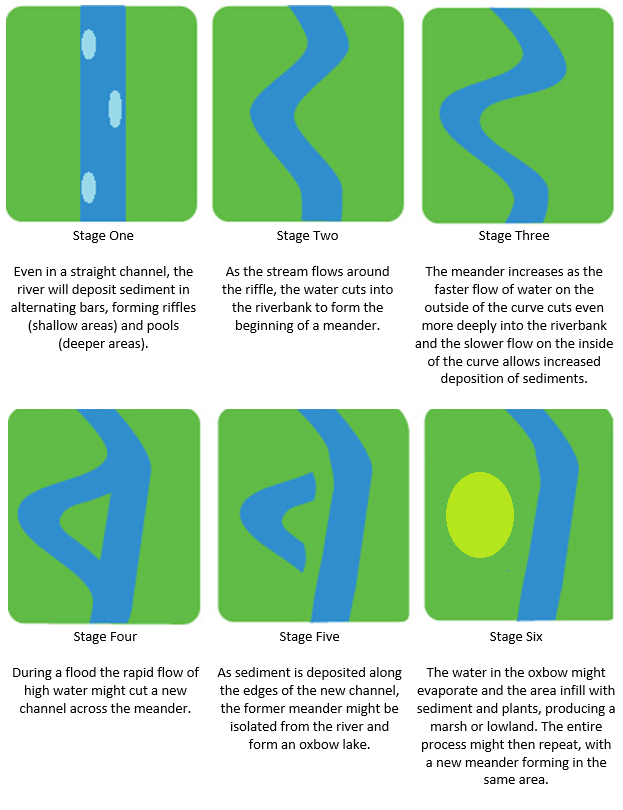Stinchcomb Meanders EarthCache
-
Difficulty:
-

-
Terrain:
-

Size:  (other)
(other)
Please note Use of geocaching.com services is subject to the terms and conditions
in our disclaimer.
Rivers rarely flow in straight lines. Slight irregularities in the depth and course of the river are amplified by the forces of hydrodynamics, forming the sinuous curves we call meanders and small lakes we call oxbows. How are these meanders and oxbows formed, and why do they eventually disappear?
 The North Canadian River twists and turns as it flows through the Stinchcomb Wildlife Refuge, which is also peppered with small ponds, creeks, and marshes. Birds and wildlife are abundant here.
The North Canadian River twists and turns as it flows through the Stinchcomb Wildlife Refuge, which is also peppered with small ponds, creeks, and marshes. Birds and wildlife are abundant here.

We see in this map the fractal nature of meanders; in this part of the river there is one large meander containing four smaller meanders (numbered 1 through 4). To log this Earth Cache, visit a few of the meanders indicated and email your answer the following questions to the CO.
Positions 1 and 3 on the map above can be reached from the designated parking area without crossing the river. You can also park by the gate on County Line Road (to the west) and hike to positions 2 and 4. There are numerous walking trails throughout Stinchcomb but some modest bushwhacking will be required. Do not cross the river unless you are certain that you can do so safely.
(1) In what direction does this section of the North Canadian River flow – north to south, or south to north?
(2) Meanders tend to move downstream. Where do you think the next meander will form, west of position 1 or east of position 4?
(3) Drop a leaf or stick (or a kayak!) into the water and estimate the velocity of the water at both the inside and outside of the meanders. If necessary, you can use different meanders for these measurements; for example, if you are near position #3 you can measure the velocity at the inside of meander #3 and at the outside of meanders #2 or #4. Could you confirm that the water flows more rapidly on the outside of the curve than on the inside?
The sinuosity of a river is the ratio of the length of the actual channel divided by the straight-line distance that the flow could take. A river with a single channel and a sinuosity greater than 1.5 is said to be meandering.
(4) Estimate the sinuosity of the portion of the North Canadian River shown on the map above.
(5) The course of the North Canadian River is in almost constant flux. Can you speculate as to what the course of the river was a century ago, when the road to the west was established? Is there evidence of a former oxbow lake in that part of the refuge? Hint: satellite photos might be more informative than the map above.
(6) There are no obvious oxbows in this part of Stinchcomb at this time. Where do you think the next oxbow(s) might form?
While not required, a photograph of yourself at the Earth Cache site would be appreciated.
Additional Hints
(No hints available.)